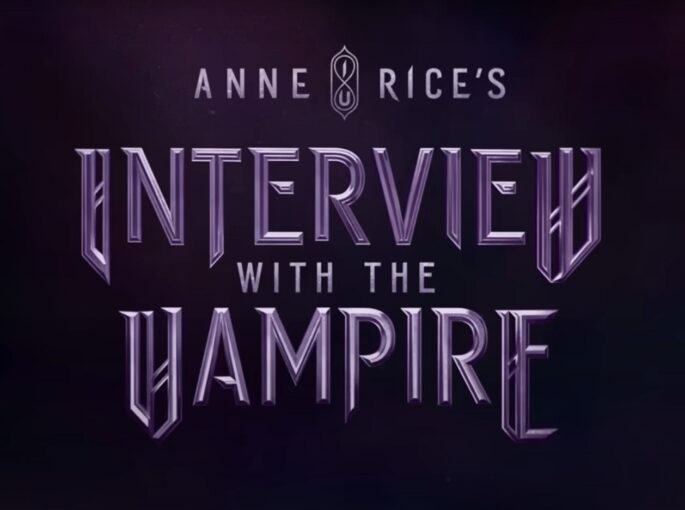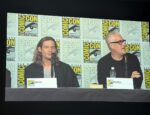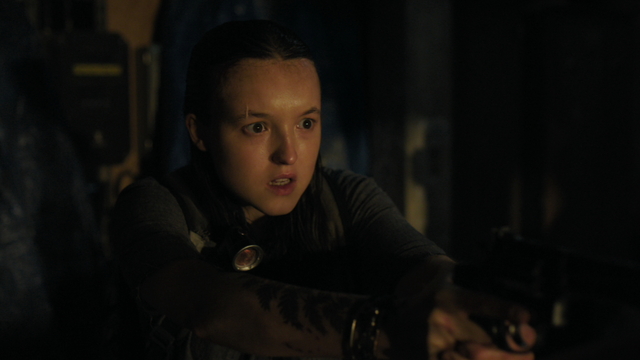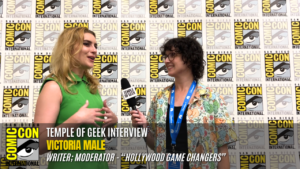Anne Rice’s vampires graced San Diego Comic-Con, captivating their devoted followers with a mesmerizing Q&A session. The Immortal Universe is expanding its repertoire by adding new branches, including The Talamasca, slated for a 2025 premiere. Additionally, Mayfair Witches will release another season this August, and Interview with the Vampire has the green light for a third season. Of course, the panel moderated by Damian Holbrook was full of fans eager to hear what new things the Immortal Universe had to reveal. The panel was full of surprises. From trailers to music teasers, bloopers, and extensive discussion on the vulnerability of beloved characters throughout season 2
About Interview with the Vampire
In season two, in the year 2022, the vampire Louis de Pointe du Lac recounts his life story to journalist Daniel Molloy. Picking up from the bloody events in New Orleans in 1940 when Louis and teen fledgling Claudia conspired to kill the Vampire Lestat de Lioncourt, Louis tells of his adventures in Europe, a quest to discover Old World Vampires and the Theatre Des Vampires in Paris, with Claudia. It is in Paris that Louis first meets the Vampire Armand.
Live SDCC Coverage
The panel begins with Holbrook introducing the guests on the panel: Mark Johnson (Anne Rice Universe executive producer), Rolin Jones (Interview showrunner and executive producer), Sam Reid (“Lestat”), Delainey Hayles (“Claudia”), Assad Zaman (“Armad”), Daniel Hart (composer), and Mara LePere-Schloop (production designer). With some guests missing, Holbrook announces that Anderson and Bogosian could not make it, However, they left the panel with heartwarming video messages which were displayed on screen.
Holbrook kicks off the panel by asking Mark Johnson what it has been like to orchestrate Anne Rice’s Universe so far, to which Johnson humbly answers that he cannot take all the credit with such talent at their mercy. He states, “I can’t believe our second season is better than our first. It’s the best thing on television.”
Holbrook then asks, “How do you collaborate with the showrunners and the creatives to make sure the casting is “so key”? Johnson replies by talking about the importance of trusting the creator, who, in this case, was Kate Rhodes James (casting director). He applauds her “exquisite taste” paired with Rolin Jones’s specific version of what he wanted from Anne Rice’s material.
“So much of the beauty of Anne Rice’s writing is in the prose, and that’s sometimes difficult to put into actor’s mouths to make that dramatic for a serial show. So, we made a decision early on to use as much of her prose as possible.” – Rolin Jones.
Holbrook: Do you think it’s important that viewers have a generally objective understanding of the events that have occurred or do you prefer so much being open to interpretation?
Mark Johnson: “What piece of art, book, movie, do you experience the same way? When you’re 21, you’re 30, or when you’re 60. Hopefully, we made something that you could revisit over and over again and feel differently every single time. We’ve made a sort of mirror to reflect on the viewer. It should be subjective and aggressively so.”
Holbrook discusses Claudia seeing Lestat as the last person she looked to in her final moments.
Hayles: Whether it was hatred or her needing his help in a way, and when we did the scene a couple of times, we kind of like navigated different places, so it was experimenting, and then I realized she was in so much pain that it was her looking her dad.
Holbrook: How is it working together to portray the complicated dynamic between Armand and Claudia? Did you recognize any parallels between both your characters and then did that inform either the performances?
Hayles comments on how both characters were turned so young.
Zaman: There’s a lot of respect for Claudia, but there are complications due to her being Lestat’s fledgling and the complicated feelings surrounding that. Even though [Armand] did what he did, he had a lot of respect for her. We respect people in a lot of weird ways, like killing someone we respect.Holbrook: Do you think Armand felt any regret for what happened to Claudia?
Zaman: I think he feels guilt for a lot of things. I think he can’t face himself, and he can’t take responsibility for things he’s done.
Holbrook talks to the composer of Interview, Daniel Hart, about his creative process in tackling heightened emotions. Hart explains that he begins his work before any footage has been captured or the script has been shared, composing various musical tracks without clear guidance on the scenes they will match. How lines are delivered, how fast the cameras are moving, the lighting, and the voices affect his choices regarding the soundtrack, whether intentional or not. An example he shares is during the scene with Armand where his character is avoidant, and Hart explains how he kept the music in the same timbre of his voice, letting the music play in the background and Assad’s voice in the forefront, filling the space.
Subconsciously, when Hart feels emotion in the scenes, he writes in the music how he feels it will give justice to what is already being played on screen. Sometimes, it highlights or underlines dialogue “with everyone and everything.”
If it’s “possible,” he tries to ‘give’ an instrument to the characters depending on the themes played on the screen to intertwine throughout the season or episode.
Holbrook then addresses his attention to the production designer of Interview, Mara LePere-Schloop, on the sets of modern New Orleans to Paris. When asked where she starts, she expresses her excitement for being able to bring the Jazz Age “Storyville” into the show, as it is rare to see in film.
LePere-Schloop: “We started up in 1795 with the Theater when Armand and Lestat kicked things off for the theater to vampires, and what Rolin and I decided was that it’d be great to bring some new energy with our application to things. We had them towards the term of the 20th century move into this new kind of industrial space. And it’s this hybrid of self-religious artifacts, a little Gothic choreographic imagery, and then our theater. It was such an exciting exercise. We took this old factory on Prague’s outskirts and built our stage and sets.”
She continues by sharing her favorite elements of the sets, including the Green Room, the living quarters of the coven members, and the special attention Rolin and the writers paid to the vampires. This attention to detail included creating detailed backgrounds and histories for each vampire, delving into their past lives and how this past influenced the design of their living spaces.
The Interview with the Vampire section of the panel ends with a teaser for the inevitable season 3, introducing a first glimpse of the Vampire Lestat in his Rockstar Era.















debo dar las gracias infinitamente a todos los que se comprometieron y trabajaron duro en esta extraordinario show es genial es television no se parece mas cine en formato pequeño por la belleza de sus imagenes dialogos musica escenografia hasta los mas minimos detalles fueron cuidados el arte que muestra vestuario sus grandiosas y sentidas actuaciones incluso en personajes secundarios minimos se nota todo el amor x el material que dieron vida a la serie y todavia queda mas x asombrarnos y esto dispuesta a que me lleven a traves de la pantalla a todos esos lugares que lei con mucho agrado en mi juventud y adultes no hay nada como entrevista con el vampire que le iguale